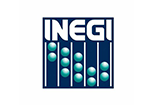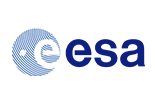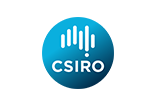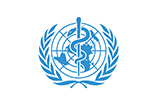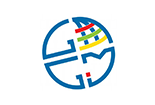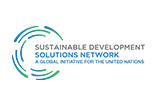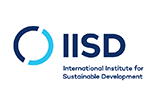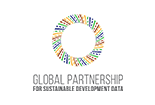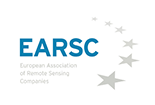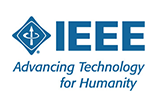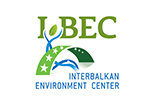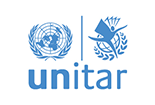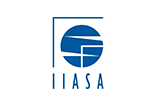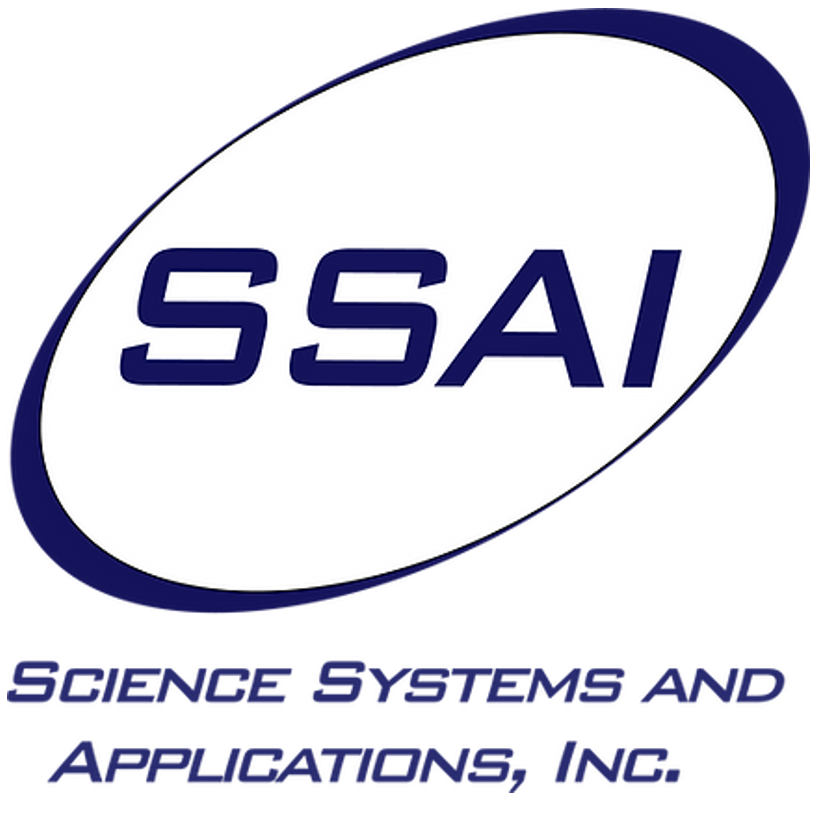Emerging Technologies Reshaping Carbon Offset Industry Credibility
 Anusuya Datta is a seasoned writer/journalist with special interest in earth observation and sustainability issues. A published author on several international platforms, Anusuya is currently based out of Canada, and earlier worked with some of the finest brands in Indian media. She is also part of the EO4SDG board.
Anusuya Datta is a seasoned writer/journalist with special interest in earth observation and sustainability issues. A published author on several international platforms, Anusuya is currently based out of Canada, and earlier worked with some of the finest brands in Indian media. She is also part of the EO4SDG board.
A writer by choice, an editor by profession, and a technology commentator by chance, Anusuya is passionate about news and numbers, but it is the intersection of technology, sustainability and humanitarian issues that excites her most.
In this article, Anusuya delves into the evolving landscape of the carbon offset industry, where cutting-edge digital advancements are spearheading a transformative era in measurement, reporting and verification that promises increased transparency and accountability.
This is the second entry in our new series “Mapping Progress: EO and the SDGs,” which highlights voices from the EO4SDG community and beyond.
You can find Anusuya’s LinkedIn HERE
The Carbon Offset Industry
At the SDG Summit and United Nations General Assembly meetings last month, the urgency of addressing climate change was palpably evident, reflecting the international momentum towards ensuring a sustainable future for all. At the heart of this issue is UN Sustainable Development Goal (SDG) 13: Climate Action. SDG 13 specifically calls for urgent actions to combat climate change and its effects. It urges nations to strengthen their adaptive capabilities, incorporate climate measures into policies, and mobilize climate finance.
Carbon offsets have long been recognized as a pivotal instrument for helping to achieve the objectives of SDG 13. They not only provide a practical solution to counterbalance atmospheric carbon but also have a ripple effect across various sustainable goals. Specifically, they bolster clean energy initiatives (SDG 7), help preserve and restore life on land (SDG 15), and spur industry innovation (SDG 9). This interconnectedness underscores how carbon offsets can be leveraged to advance a range of SDGs, thereby promoting a cohesive and sustainable vision for our planet.
Yet, despite its pivotal role and potential, the carbon offset industry is not without challenges. The sector currently stands at a crossroads, grappling with a credibility crisis stemming from a series of allegations and unprecedented media attention. Allegations include funding of projects that would have proceeded regardless of offsets and a failure to effectively reduce emissions, resulting in adverse environmental and community impacts.
According to the World Bank, while carbon markets have the potential to unlock funds to meet climate objectives, potentially saving an estimated $250 billion per year by 2030, their impact on global greenhouse gas (GHG) emissions reduction relies on ensuring the credibility, accuracy, and accountability of the transactions.
The good news is that several technologies are advancing and offer the potential to assist in this carbon sector. When measuring the success of these technologies on carbon projects, it is essential to demonstrate that carbon offsets reduce emissions. Achieving this is often complex due to the intricacies of Earth’s processes and the requirement of counterfactual analysis i.e., considering what would happen in the absence of a project, says Aaron Addison, incoming Executive Director, World Geospatial Industry Council.
Joel Finkelstein, Senior Director, Media and Advocacy, Verra, explains that while this approach is not unique to carbon markets, “counterfactual analysis is, by its nature, impossible to confirm with 100% certainty…”
Thankfully, as the carbon offset sector undergoes a digital transformation to restore its credibility, technology-driven advancements in measurement, reporting, and verification (MRV) present a compelling opportunity to rejuvenate transparency and accountability within the industry. This innovation in MRV process is known as digital MRV or dMRV, which the World Bank defines as the use of smart sensors, satellites and drones, cloud computing, the Internet of Things, and blockchain encryption to streamline data collection, processing and quality control in MRV processes.

However, digital technologies currently comprise only around 10% of the carbon offset process, according to a report by Gold Standard, a standard and certification body, suggesting that there is still significant room for growth and adoption of digital MRV technologies in the industry.
Accurate measurement and monitoring are essential for ensuring the effectiveness and integrity of carbon offsetting initiatives, and the key to accurate measurement is precise data, says Rachel Hor, Chief Operations Officer, CarbonTerra, a Canadian startup which creates technology solutions for farmers that simplifies the monetization of carbon offsets.
Collecting precise data about the Earth involves a combination of advanced technologies and methodologies, including satellites, drones, and ground sensors.
Satellite imagery
One of the key benefits of using satellite imagery is its ability to monitor large areas of land quickly and accurately, allowing for a more comprehensive understanding of the changes in land use and land cover. Additionally, satellite imagery can provide a baseline measurement of carbon sequestration, which can be used to track the effectiveness of emissions reduction activities over time. “Satellite remote sensing data will be instrumental to the transparency, accuracy, credibility, and auditability of carbon removal projects. This data is not only invaluable in remote and developing regions, but also essential to address the challenges even in highly developed markets,” says Nick Butcher, Co-Founder and CTO, CarbonCrop.
CarbonCrop operates in New Zealand, which has one of the most advanced nature-based carbon markets in the world, but Butcher reveals that there are still numerous issues with credibility, accuracy, efficiency, etc., even with strong rule of law and good faith actors. “Remote sensing data is fundamental to the solutions we’re bringing to the market, despite the strong regulatory frameworks and easy access to data.”
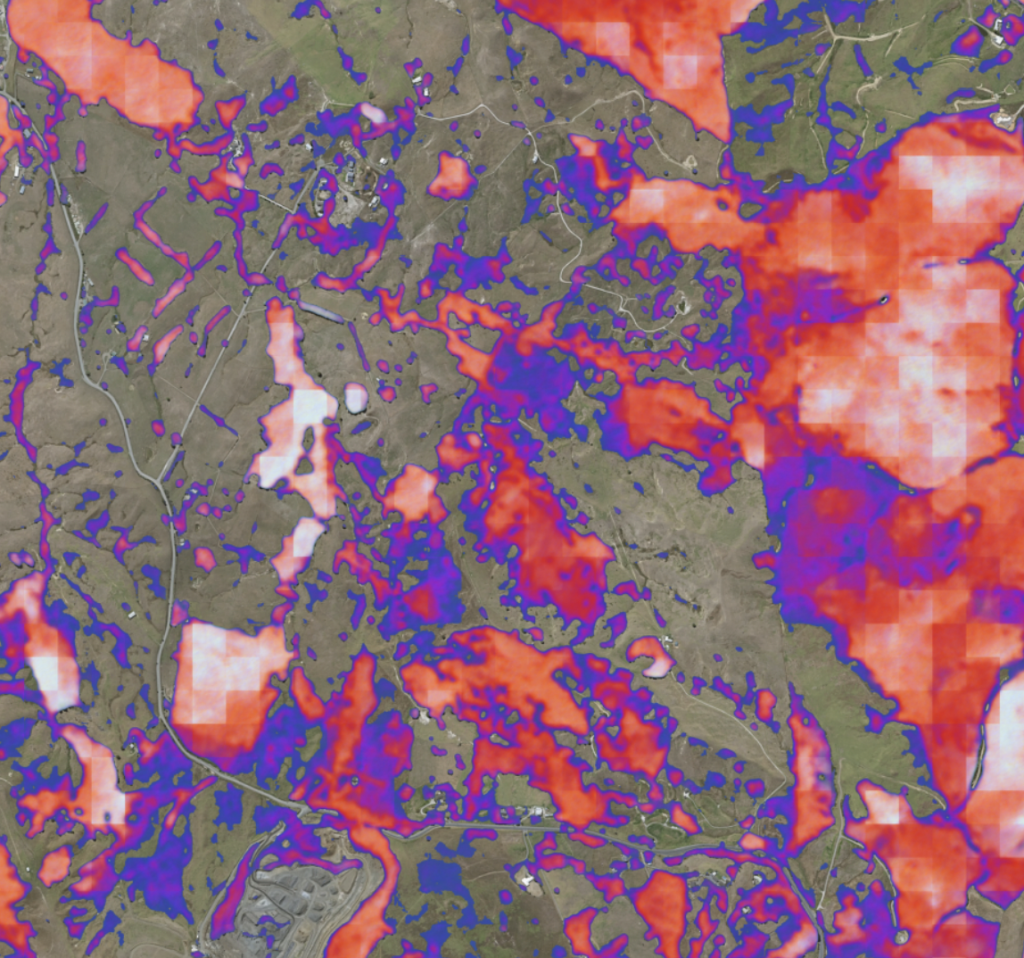
More specifically regarding the carbon market, by providing visual evidence of the changes in land use and land cover, satellite imagery can help to verify the amount of carbon sequestered or emissions reduced, which is essential for ensuring the integrity of carbon offset projects. Remote sensing technologies allow us to see what’s going on to an adequate resolution, and as the technology improves, the frequency of scans will reach basically real-time, anywhere in the world, says a spokeperson for Satelligence.
Satelligence is an example of the power of this technology as they use satellite imagery to provide alerts when deforestation occurs and its AI and machine learning tools have been proven to be able to predict future deforestation hotspots. A good use case is the palm oil sector. Previously a black sheep, sector-wide work under standards bodies like the RSPO, augmented by the transparency brought by satellite deforestation monitoring, has made palm a leader in commodity sustainability worldwide. Palm-driven deforestation is now at the lowest point in 20 years!
In addition to its capabilities, satellite imagery is also more cost-effective, offering a significant advantage over traditional MRV methods which entail labor-intensive manual processes and on-site audits, points out Hor. Satellite imagery can also help in quantification as well.
CarbonTerra, for example, uses imagery-based indicators to enhance carbon sequestration on farms, allowing farmers to quantify how much carbon is stored in the soil and validate the credits they are selling. This quantification provided by satellite imagery, is helping to replace calculations based on national yearly averages to active real-time monitoring of areas in granular detail.
Finkelstein says Verra, the world’s largest certifier of voluntary carbon offsets, is actively exploring new digital platforms that integrate satellite data and can automate and standardize how data is collected, analyzed, and validated. This will help maintain objectivity, increase transparency, and dramatically reduce the costs and time associated with issuing new carbon credits. In November 2022, Verra launched a working group to develop protocols, guidance, and frameworks for the use of digital measuring, reporting, and verification platforms in its Verified Carbon Standard Program. This was followed by the launch of a digital MRV pilot program in December that aims to develop and test the implementation of dMRV technology tools and platforms.
AI and ML
In addition to remote sensing, artificial intelligence (AI) and machine learning (ML) are also important new technologies, as they can handle vast and intricate data streams from a variety of sources. Machine learning is also fundamental to the effective application of local and remote sensing data, underlines Butcher. These advanced climate models and data analysis techniques play a crucial role in assessing the long-term climate impact of carbon offset projects. They help predict future scenarios, evaluate the additionality of offsetting activities, and estimate the overall effectiveness of emissions reductions. Additionally, AI’s continuous learning ensures ongoing accuracy, adapting to evolving environmental conditions.
One of the biggest advances, according to Satelligence, is the availability of consistent and repeated observations from different kinds of satellite sensors, with data openly available.
For instance, CTrees, a global non-profit that aims to track carbon in every tree and forest on the planet, employs AI-enabled satellite data for real-time carbon measurement, encompassing emissions and removals from all forest types at a one-hectare resolution. It is the first global monitoring system to enable robust forest carbon accounting with methods and data that are transparent, accurate, and actionable.
While these technologies facilitate accurate measurement and monitoring, Hor states that it is important to use them in conjunction with robust scientific methodologies and on-the-ground verification to ensure the credibility of the offset projects.
Drones and aerial imagery
Earth-based remote sensing technologies such as drones and aerial imagery can complement satellite imagery by providing on-the-ground data at a higher resolution. Drones, also known as unmanned aerial vehicles (UAVs), have found extensive applications across various industries like agriculture, infrastructure development, and disaster response. Yet, their potential in the realm of climate change research has only recently begun to be fully harnessed. Armed with advanced sensors and imaging technology, drones can now gather high-resolution data concerning atmospheric CO2 levels and other greenhouse gases. Additionally, they excel in monitoring the health of ecosystems critical for carbon sequestration.
Lidar (Light Detection and Ranging)
Lidar is emerging as a valuable instrument for precise measurement and monitoring of environment projects. Lidar uses laser pulses to create precise 3D maps of terrain and vegetation structure, providing insights into forest biomass, height and structure, which are essential for estimating carbon storage accurately. Lidar excels in producing precise baseline data, tracking changes over time, and facilitating verification and validation processes. For instance, Sylvera, a U.K.-based startup uses machine learning to analyze a variety of visual data, including satellite imagery and Lidar to boost accountability and credibility around carbon offsetting projects.
NASA has developed an Integrated Path Differential Absorption (IPDA) Lidar that incorporates high-energy, double-pulse lasers with high repetition rates. The compact Lidar instrument aims to provide accurate, high-resolution atmospheric CO2 column measurements from an airborne platform. While not directly linked to carbon offsetting project, it demonstrates the potential of Lidar technology in environmental sustainability efforts.
IoT (Internet of Things)
IoT sensors can be deployed across offset projects to monitor environmental parameters in real time. These sensors can measure temperature, humidity, soil moisture, and other relevant variables.
The Rainforest Connection uses IoT sensors from repurposed mobile phones to prevent deforestation by detecting activities like illegal logging, which makes up about 15% of all carbon emissions worldwide. Another example of IoT sensors in environmental sustainability projects is the use of connected systems to monitor wind direction and optimize the efficiency of wind turbine blades and solar panels. While these are not examples specific to carbon offsetting, IoT technology has been employed in various environmental sustainability efforts to monitor carbon footprints, and could prove to be valuable for offset MRV as well.
Blockchain
Blockchain brings the possibility of immutable ledgers to decision-making, and can provide a system of record on carbon production, usage and offsets, says Addison.
In its recommendations for digital MRV (dMRV), the World Bank mentions blockchain technology in particular stating: “Blockchain technology provides both the accountability and transactional efficiency, via smart contracts, to address the increasing diversity of Monitoring, Reporting and Verification (MRV) systems used to measure GHG emissions reductions; and it also helps account for diversity of regulations, climate assets, and values of mitigation outcomes, within and across jurisdictions.”
Butcher believes blockchain is not only essential to reshaping the monitoring and verification process, but also has high potential in addressing long-term governance and auditability integrity, data transparency and reuse, and an effective common-but-federated ledger to enable consistency and standardization of data plus interfaces while still permitting innovation.
Last year, the International Finance Corp (IFC) revealed that it was backing a blockchain-enabled platform to trade carbon offsets, in an effort to attract more support from institutional investors for climate-friendly projects in emerging markets. The Carbon Opportunities Fund aims to push investments for tokenized trading of carbon credits.
However, it is important to acknowledge some of the downsides to blockchain. The World Bank also warns that “as is the case with any technology, there must be consideration of the unintended consequences, technological maturity and implementation approaches that may impact the people, communities and natural ecosystems already facing climate inaction.”
In addition, Verra’s Finkelstein also points to some of the potential risks these instruments may pose, including fraud and issues around environmental integrity — for example: double issuance, double use, abstraction from underlying VCUs, energy usage, regulatory uncertainty, anonymity of entities involved, and legal uncertainty.
For this purpose, Verra prohibits the practice of creating instruments or tokens based on retired credits. However, it is considering exploring the possibility of “immobilizing” credits in Verra Registry accounts so that they can be tokenized with the transparency and traceability that market participants demand—provided that this can be done in a way that prevents fraud and upholds environmental integrity.
In 2022, Verra launched a public consultation on the organization’s approach to third-party crypto instruments and tokens. The consultation was finalized in January 2023 and the resulting summary of comments has been integral in determining next steps.
Inherent challenges
Accurately measuring and monitoring carbon offsets present several challenges due to the complexity of quantifying emissions reductions and sequestration. These challenges are listed below.
Data availability is a key challenge, especially data sharing mechanisms across projects and systems. Verified field data on actual carbon sequestration rates are some of the most valuable and most expensive to collect. “Therefore, it is essential that we progress frameworks that enable and fund the collection and distribution of this data,” says Butcher.
Weak regulatory frameworks in developing economies for environmental protection and carbon offset projects could result in insufficient scrutiny, making it easier for questionable projects to go unnoticed and potentially harm the environment and local communities.
Lack of adequate infrastructure, especially in remote regions, is another hurdle to the collection of accurate and timely emissions data, hindering effective MRV of projects. Also, Butcher points out that data is often exchanged as spreadsheets via email, removal units recognized without monitoring or durability or audit mechanisms in place, and processes that offer at best weak assurances regarding single-use, even for high-quality projects implemented by good-faith actors.
Lack of technical capacity, especially among local communities and project implementers in remote regions, is another issue. However, this is also largely to do with the current tools and processes that are fundamentally inadequate to deliver the scale, economics, and integrity required. Emerging technologies combined with adequate training for local communities will go a long way in solving this issue.
Lack of standardization remains a challenge, as is achieving progress given the broad extent of existing commercial interests in the status quo.
However, there has been some progress here, as Butcher points out. “We are encouraged by the overlap between e.g. the ISO-14064 standards, the GHG-P and SBTI programs, and the ICVCM principles, but there are still numerous inconsistencies or complications.”
Lack of coherent policies is a pressing concern. “Inconsistent regulatory frameworks and standards across regions hinder the effective monitoring and evaluation of carbon offset projects,” underlines Hor.
This lack of uniformity not only erodes trust but also complicates the integration of new technologies and the establishment of a robust, globally accepted system for carbon offset verification.
In conclusion: a note of caution
With all this technology also comes the possibility of misleading assessments. Currently the incentives on both sides — to claim as much as possible, and to critique as much as possible based on whatever data is available — are clouding the narrative. “If we don’t improve discussions around data reliability, this back and forth will continue and ultimately little will be achieved,” the Satelligence spokesperson says.
Furthermore, Addison emphasizes that while there are now more robust imagery and sensor technologies available for the monitoring and reporting required, the effective use of this technology must be coupled with accountability. “Without this combination, we risk are merely documenting a system that continues to decline. We have the necessary science and technology for proper monitoring; it ultimately depends on the will of the global community to take action through policy and enforcement,” he says. The World Bank also emphasizes that “capacity-building and knowledge-sharing will be crucial, particularly in developing countries, to effectively deploy market infrastructure and ensure carbon markets are game-changers in the fight against climate change.”
As technology continues to evolve, emerging technologies including high-resolution satellite imagery, drones, Lidar, IoT sensors, and smart blockchains, will provide more accurate and transparent data, fostering trust among stakeholders, enabling more effective ecosystem management, and driving the carbon offset industry towards greater environmental sustainability and impact.
Date Published: October 12, 2023





